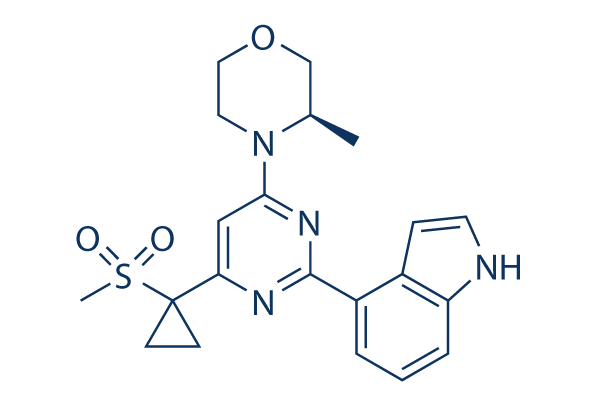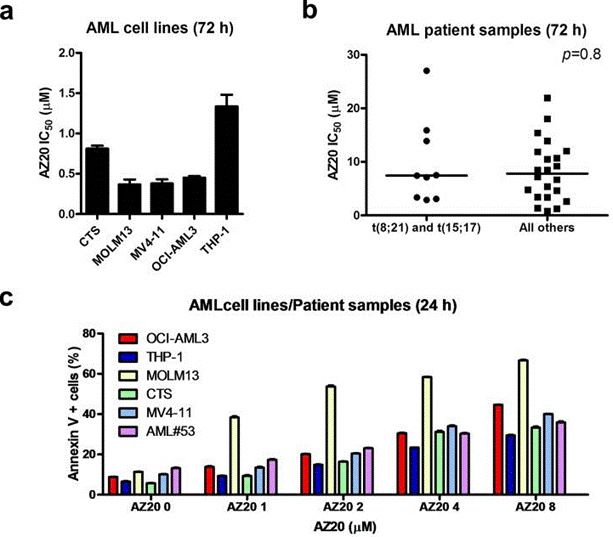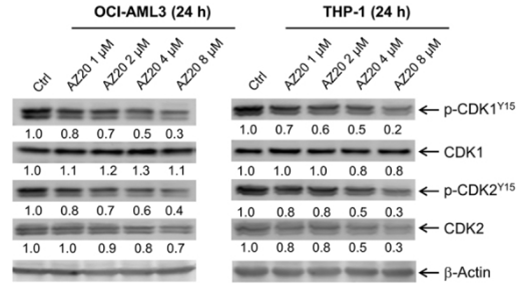
- Inhibitors
- By product type
- Natural Products
- Inducing Agents
- Peptides
- Antibiotics
- Antibody-drug Conjugates(ADC)
- PROTAC
- Hydrotropic Agents
- Dyes
- By Signaling Pathways
- PI3K/Akt/mTOR
- Epigenetics
- Methylation
- Immunology & Inflammation
- Protein Tyrosine Kinase
- Angiogenesis
- Apoptosis
- Autophagy
By research - Antibodies
- Compound Libraries
- Popular Compound Libraries
- Customize Library
- Clinical and FDA-approved Related
- Bioactive Compound Libraries
- Inhibitor Related
- Natural Product Related
- Metabolism Related
- Cell Death Related
- By Signaling Pathway
- By Disease
- Anti-infection and Antiviral Related
- Neuronal and Immunology Related
- Fragment and Covalent Related
- FDA-approved Drug Library
- FDA-approved & Passed Phase I Drug Library
- Preclinical/Clinical Compound Library
- Bioactive Compound Library-I
- Bioactive Compound Library-Ⅱ
- Kinase Inhibitor Library
- Express-Pick Library
- Natural Product Library
- Human Endogenous Metabolite Compound Library
- Alkaloid Compound LibraryNew
- Angiogenesis Related compound Library
- Anti-Aging Compound Library
- Anti-alzheimer Disease Compound Library
- Antibiotics compound Library
- Anti-cancer Compound Library
- Anti-cancer Compound Library-Ⅱ
- Anti-cancer Metabolism Compound Library
- Anti-Cardiovascular Disease Compound Library
- Anti-diabetic Compound Library
- Anti-infection Compound Library
- Antioxidant Compound Library
- Anti-parasitic Compound Library
- Antiviral Compound Library
- Apoptosis Compound Library
- Autophagy Compound Library
- Calcium Channel Blocker LibraryNew
- Cambridge Cancer Compound Library
- Carbohydrate Metabolism Compound LibraryNew
- Cell Cycle compound library
- CNS-Penetrant Compound Library
- Covalent Inhibitor Library
- Cytokine Inhibitor LibraryNew
- Cytoskeletal Signaling Pathway Compound Library
- DNA Damage/DNA Repair compound Library
- Drug-like Compound Library
- Endoplasmic Reticulum Stress Compound Library
- Epigenetics Compound Library
- Exosome Secretion Related Compound LibraryNew
- FDA-approved Anticancer Drug LibraryNew
- Ferroptosis Compound Library
- Flavonoid Compound Library
- Fragment Library
- Glutamine Metabolism Compound Library
- Glycolysis Compound Library
- GPCR Compound Library
- Gut Microbial Metabolite Library
- HIF-1 Signaling Pathway Compound Library
- Highly Selective Inhibitor Library
- Histone modification compound library
- HTS Library for Drug Discovery
- Human Hormone Related Compound LibraryNew
- Human Transcription Factor Compound LibraryNew
- Immunology/Inflammation Compound Library
- Inhibitor Library
- Ion Channel Ligand Library
- JAK/STAT compound library
- Lipid Metabolism Compound LibraryNew
- Macrocyclic Compound Library
- MAPK Inhibitor Library
- Medicine Food Homology Compound Library
- Metabolism Compound Library
- Methylation Compound Library
- Mouse Metabolite Compound LibraryNew
- Natural Organic Compound Library
- Neuronal Signaling Compound Library
- NF-κB Signaling Compound Library
- Nucleoside Analogue Library
- Obesity Compound Library
- Oxidative Stress Compound LibraryNew
- Plant Extract Library
- Phenotypic Screening Library
- PI3K/Akt Inhibitor Library
- Protease Inhibitor Library
- Protein-protein Interaction Inhibitor Library
- Pyroptosis Compound Library
- Small Molecule Immuno-Oncology Compound Library
- Mitochondria-Targeted Compound LibraryNew
- Stem Cell Differentiation Compound LibraryNew
- Stem Cell Signaling Compound Library
- Natural Phenol Compound LibraryNew
- Natural Terpenoid Compound LibraryNew
- TGF-beta/Smad compound library
- Traditional Chinese Medicine Library
- Tyrosine Kinase Inhibitor Library
- Ubiquitination Compound Library
-
Cherry Picking
You can personalize your library with chemicals from within Selleck's inventory. Build the right library for your research endeavors by choosing from compounds in all of our available libraries.
Please contact us at info@selleckchem.com to customize your library.
You could select:
- Bioreagents
- qPCR
- 2x SYBR Green qPCR Master Mix
- 2x SYBR Green qPCR Master Mix(Low ROX)
- 2x SYBR Green qPCR Master Mix(High ROX)
- Protein Assay
- Protein A/G Magnetic Beads for IP
- Anti-Flag magnetic beads
- Anti-Flag Affinity Gel
- Anti-Myc magnetic beads
- Anti-HA magnetic beads
- Poly DYKDDDDK Tag Peptide lyophilized powder
- Protease Inhibitor Cocktail
- Protease Inhibitor Cocktail (EDTA-Free, 100X in DMSO)
- Phosphatase Inhibitor Cocktail (2 Tubes, 100X)
- Cell Biology
- Cell Counting Kit-8 (CCK-8)
- Animal Experiment
- Mouse Direct PCR Kit (For Genotyping)
- Featured Products
- MRTX1133
- Nab-Paclitaxel
- KP-457
- IAG933
- RMC-6236 (Daraxonrasib)
- RMC-7977
- Zoldonrasib (RMC-9805)
- GsMTx4
- Navitoclax (ABT-263)
- TSA (Trichostatin A)
- Y-27632 Dihydrochloride
- SB431542
- SB202190
- MK-2206 Dihydrochloride
- LY294002
- Alisertib (MLN8237)
- XAV-939
- CHIR-99021 (Laduviglusib)
- Bafilomycin A1 (Baf-A1)
- Thiazovivin (TZV)
- CP-673451
- Verteporfin
- DAPT
- Galunisertib (LY2157299)
- MG132
- SBE-β-CD
- Tween 80
- Bavdegalutamide (ARV-110)
- Z-VAD-FMK
- Wnt-C59 (C59)
- IWR-1-endo
- (+)-JQ1
- 3-Deazaneplanocin A (DZNep) Hydrochloride
- RepSox (E-616452)
- Erastin
- Q-VD-Oph
- Puromycin Dihydrochloride
- Cycloheximide
- Telaglenastat (CB-839)
- A-83-01
- Ceralasertib (AZD6738)
- Liproxstatin-1
- Emricasan (IDN-6556)
- PMA (Phorbol 12-myristate 13-acetate)
- Dibutyryl cAMP (Bucladesine) sodium
- Nedisertib (M3814)
- PLX5622
- IKE (Imidazole Ketone Erastin)
- STM2457
- Saruparib (AZD5305)
- New Products
- Contact Us
research use only
AZ20 ATM/ATR inhibitor
Cat.No.S7050

Chemical Structure
Molecular Weight: 412.51
Quality Control
Batch:
Purity:
99.92%
99.92
Cell Culture, Treatment & Working Concentration
| Cell Lines | Assay Type | Concentration | Incubation Time | Formulation | Activity Description | PMID |
|---|---|---|---|---|---|---|
| HT29 | Function assay | 1 hr | Inhibition of ATR-mediated CHK1 phosphorylation at serine 345 in human HT29 cells after 1 hr in presence of 4-nitroquinoline 1-oxide, IC50=0.05μM | 23394205 | ||
| LoVo | Growth inhibition assay | 72 hrs | Growth inhibition of human LoVo cells after 72 hrs by MTS assay, GI50=0.2μM | 23394205 | ||
| MDA-MB-468 | Function assay | Inhibition of mTOR-mediated AKT phosphorylation at serine 473 in human MDA-MB-468 cells, IC50=2.4μM | 23394205 | |||
| LoVo | Antitumor assay | 50 mg/kg | 13 days | Antitumor activity against human LoVo cells xenografted in Swiss nu/nu mouse assessed as tumor growth inhibition at 50 mg/kg, po qd for 13 days relative to control | 23394205 | |
| LoVo | Antitumor assay | 25 mg/kg | 13 days | Antitumor activity against human LoVo cells xenografted in Swiss nu/nu mouse assessed as tumor growth inhibition at 25 mg/kg, po bid for 13 days relative to control | 23394205 | |
| HT29 | Function assay | 60 mins | Inhibition of ATR in human HT29 cells after 60 mins by Hoechst 33258 staining-based assay, IC50=0.061μM | 30346772 | ||
| LoVo | Cytotoxicity assay | 72 hrs | Cytotoxicity against human LoVo cells after 72 hrs by MTS assay, GI50=0.2μM | 30346772 | ||
| MDA-MB-468 | Function assay | Inhibition of mTOR in human MDA-MB-468 cells assessed as decrease in 70S6K S235/236 phosphorylation, IC50=0.72μM | 30346772 | |||
| HT-29 | Cytotoxicity assay | 72 hrs | Cytotoxicity against human HT-29 cells after 72 hrs by MTS assay, GI50=0.97μM | 30346772 | ||
| LoVo | Function assay | 25 mg/kg | 8 hrs | Plasma concentration in Swiss nu/nu mouse xenografted with human LoVo cells at 25 mg/kg, po bid after 8 hrs, Cp=1.8μM | 30346772 | |
| MDA-MB-468 | Function assay | Inhibition of mTOR in human MDA-MB-468 cells assessed as decrease in AKT phosphorylation at S473 residue, IC50=2.4μM | 30346772 | |||
| LoVo | Function assay | 50 mg/kg | 8 hrs | Plasma concentration in Swiss nu/nu mouse xenografted with human LoVo cells at 50 mg/kg, po qd after 8 hrs, Cp=3.5μM | 30346772 | |
| Click to View More Cell Line Experimental Data | ||||||
Chemical Information, Storage & Stability
| Molecular Weight | 412.51 | Formula | C21H24N4O3S |
Storage (From the date of receipt) | |
|---|---|---|---|---|---|
| CAS No. | 1233339-22-4 | Download SDF | Storage of Stock Solutions |
|
|
| Synonyms | N/A | Smiles | CC1COCCN1C2=NC(=NC(=C2)C3(CC3)S(=O)(=O)C)C4=C5C=CNC5=CC=C4 | ||
Solubility
|
In vitro |
DMSO
: 83 mg/mL
(201.2 mM)
Ethanol : 3 mg/mL Water : Insoluble |
Molarity Calculator
|
In vivo |
|||||
In vivo Formulation Calculator (Clear solution)
Step 1: Enter information below (Recommended: An additional animal making an allowance for loss during the experiment)
mg/kg
g
μL
Step 2: Enter the in vivo formulation (This is only the calculator, not formulation. Please contact us first if there is no in vivo formulation at the solubility Section.)
%
DMSO
%
%
Tween 80
%
ddH2O
%
DMSO
+
%
Calculation results:
Working concentration: mg/ml;
Method for preparing DMSO master liquid: mg drug pre-dissolved in μL DMSO ( Master liquid concentration mg/mL, Please contact us first if the concentration exceeds the DMSO solubility of the batch of drug. )
Method for preparing in vivo formulation: Take μL DMSO master liquid, next addμL PEG300, mix and clarify, next addμL Tween 80, mix and clarify, next add μL ddH2O, mix and clarify.
Method for preparing in vivo formulation: Take μL DMSO master liquid, next add μL Corn oil, mix and clarify.
Note: 1. Please make sure the liquid is clear before adding the next solvent.
2. Be sure to add the solvent(s) in order. You must ensure that the solution obtained, in the previous addition, is a clear solution before proceeding to add the next solvent. Physical methods such
as vortex, ultrasound or hot water bath can be used to aid dissolving.
Mechanism of Action
| Features |
ATR-selective inhibitor with high permeability and good stability.
|
|---|---|
| Targets/IC50/Ki | |
| In vitro |
AZ20 shows good selectivity against all of the PI3K isoforms together with ATM and DNA-PK. [2] In vitro, this compound decreases pChk1 Ser345, pChk1 Ser317 and pChk1 Ser296 levels in a concentration-dependent manner. Prolonged exposure with this chemical increases γH2AX pan-nuclear staining, indicative of replication stress. This is associated with S-phase arrest and increase in phospho-histone H3. It induces growth inhibition and cell death in vitro and its profile of activity is distinct from other cytotoxic agents. The cytotoxic effect of this agent can be increased in combination with the selective ATM inhibitor KU-60019. [1]
|
| In vivo |
Female nude mice bearing LoVo tumors are treated with AZ20 orally at a dose of 25 mg/kg twice daily or 50 mg/kg once daily for 13 days, led to significant tumor growth inhibition. [2] This is associated with a persistent elevation of γH2AX pan-nuclear staining in xenograft tissue, but a transient increase in mouse bone marrow at therapeutic doses, suggesting a favourable therapeutic index. [1]
This compound is assessed for drug−drug interaction (DDI) potential specifically from inhibition of cytochrome P450 enzymes. It is found to inhibit the cytochrome 3A4-mediated metabolism of midazolam by 50% at 10 μM. This chemical has respectable bioavailability in a low dose rat PK study. [2]
|
References |
Applications
| Methods | Biomarkers | Images | PMID |
|---|---|---|---|
| Growth inhibition assay | IC50 |

|
28176818 |
| Western blot | p-CDK1 / CDK1 / p-CDK2 / CDK2 γH2AX / RRM1 / RRM2 |

|
28176818 |
Tech Support
Tel: +1-832-582-8158 Ext:3
If you have any other enquiries, please leave a message.
Frequently Asked Questions
Question 1:
If I want to completely block the kinase activity from the in vitro cell lines, how much concentration of it should I use?
Answer:
IC50 5nM was quoted from a previous publication in which the author tested its IC50 in a cell-free assay. In cell culture, many factors, such as membrane permeability and target protein concentration, may affect the efficiency. Each cell line responds to the same compound differently, and it is very difficult to predict the optimized concentration simply based on cell-free data. In cell culture experiments, the required concentration is usually higher. We recommend that you perform a pilot experiment and test different concentrations (50nM to 500μM) to get the optimized condition.






































